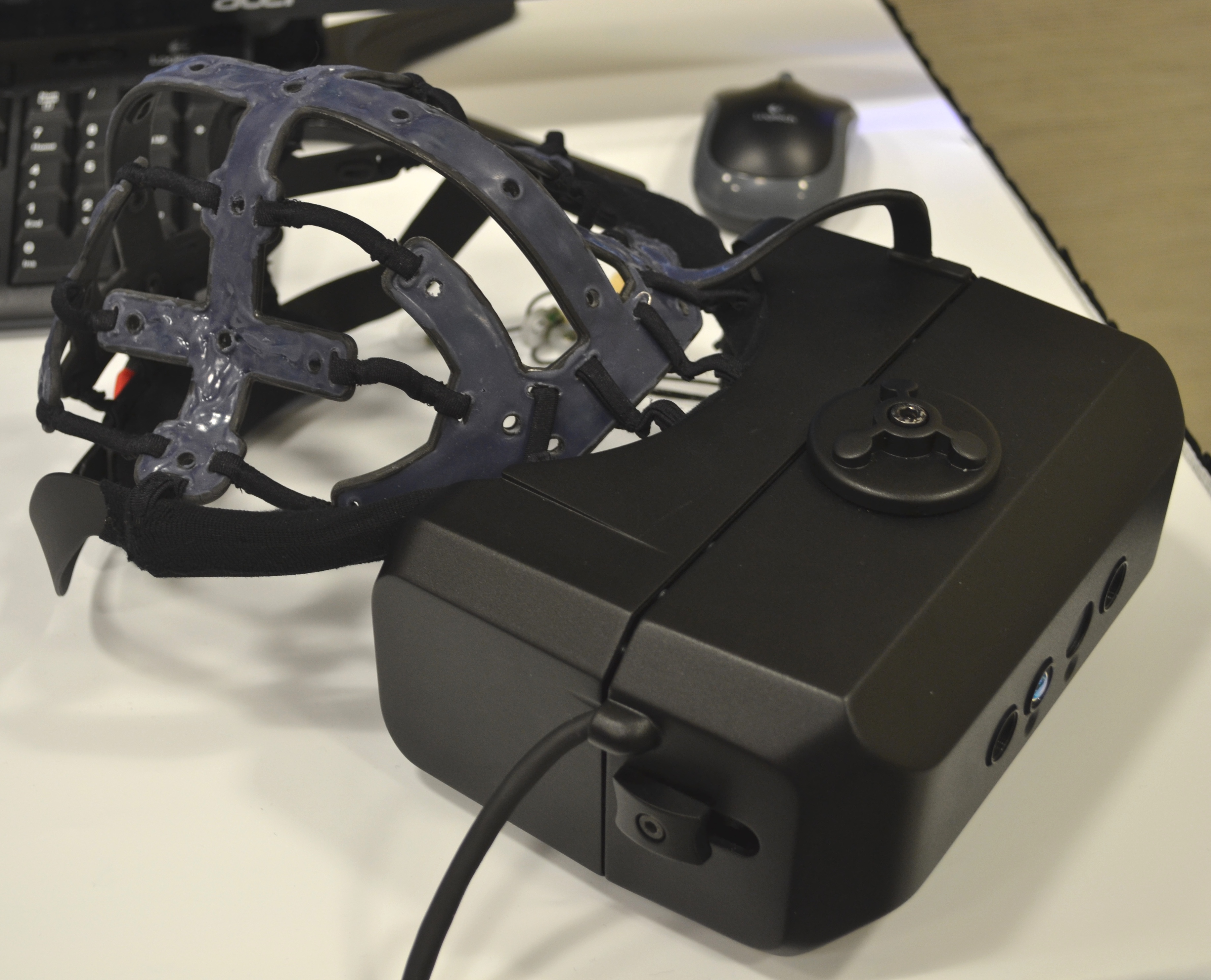MindMaze VR Lets You Control Games With Your Brain
When it comes to virtual reality (VR), most people assume that its original purpose is for gaming and other interactive experiences. However, there is potential in the use of VR in other industries and scenarios, other than pure gaming experiences. MindMaze started out in the medical field, testing out its VR platform on medical patients suffering from certain neurological problems. Now it's expanding its usage to the gaming industry with the latest version of its own device, the MindLeap.
At first, the headset looks very similar to Oculus' Rift DK2 or Razer's OSVR; the viewer can be adjusted to fit eyeglasses, and both lenses can be adjusted for focus and eye width. However, the biggest difference is the headband. While the Rift and OSVR feature a simple head strap, MindLeap features multiple straps, like a net. The reason for the design is that MindMaze's head-mounted display (HMD) does more than just VR. In the near future, the company plans to use its research to implement sensors in the device that allow you to control games with your brainwaves.
This ambitious effort is also coupled with the fact that the device not only displays in VR, but also has the option to display augmented reality (AR) as well, including finger tracking. The number of features is unheard of when compared to other devices on the market, but I wanted to see if MindMaze could actually deliver on its sales pitch.
When I first put on the headset, I initially saw an AR display, which is activated by turning your head to the right. When I turned to the left, the camera turned off and activated the VR portion of the device. In both scenarios, the device tracked my hand as it moved in front of me. In AR, my fingertips were on fire and there were traces of fire in the air as I moved my hands across the screen. In VR, my hands were blue and made up of small cubes as if I was in the movie Tron. I noticed some latency in the display, but it wasn't enough of an issue that would cripple the experience. Fortunately, there is an option to keep the display just in AR or VR so you don't have to worry about keeping your head turned in a certain direction to keep VR on. The display was set to 720p with a 60-degree view range. However, MindMaze hopes to expand that to 1080p with a 120-degree view range in the future.
The most interesting part of the headset wasn't actually installed with the headset. Since the MindLeap is still in its prototype phase, the brain sensors were not installed yet, but I tried a prototype of the sensor. Initially, the sensors required a special gel to be placed on your head to get a better response from your brain to the sensors. Fortunately, I didn't have to apply any gel since the sensors I used only needed enough skin contact at the back of my head.
To test out my brain power MindMaze showed me a game where two orbs on opposite ends of the screen expand and contract with a ball in the middle of the screen. The goal was to push the ball in the middle towards the opposing orb by sending bursts of energy from your own orb. The bigger the orb expansion, the larger the energy. First, I had to relax my mind by taking slow and deep breaths. As I relaxed, the ball expanded, and I released the energy by furrowing my eyebrows. The process did take some time to get used to as there were some latency issues, and a few recalibrations had to be made. In the end, I won the game.
What amazed me was the idea that the gaming applications come second on MindMaze's priorities. The entire setup of MindLeap and the brainwave sensors were initially created for medical purposes and then they looked to gaming to see what MindLeap can do in other scenarios. With that in mind, it's safe to say that it will take some time for MindMaze to get solid footing in the VR gaming space. The company plans to release an SDK and the HMD in the next few months, and they hope to speed up the process with a recent funding deal that garnered the company $8.5 million.
Get Tom's Hardware's best news and in-depth reviews, straight to your inbox.
MindLeap is definitely a unique HMD and it offers a lot of great features, but as excited as I am for its potential, I have to play the cautious optimism card and wait to see what happens in the future. MindMaze still has a lot of work to do between now and its eventual release date, not to mention that it needs developers who are willing to make something that incorporates everything MindLeap has to offer. Seeing as Razer's latest update to OSVR adds similar features, with the exception of the brain sensors, it will be interesting to see how MindMaze handles being the new kid on the VR block.
Follow Rexly Peñaflorida II @Heirdeux. Follow us @tomshardware, on Facebook and on Google+.
Rexly Peñaflorida is a freelance writer for Tom's Hardware covering topics such as computer hardware, video games, and general technology news.

